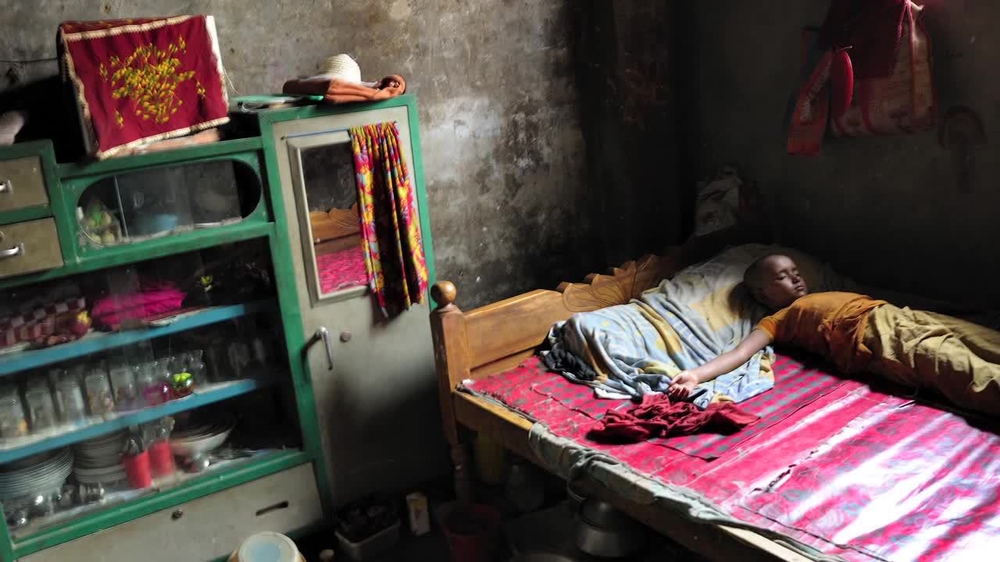Over the last decades, rapid and sustained urbanisation has swelled existing slums, and spurred the creation of new ones around the world. Today, more than one out of ten people on the planet live in a slum. To highlight the critical humanitarian and medical needs that exist in urban settings worldwide, Médecins Sans Frontières (MSF) is now launching Urban Survivors - a multimedia project in collaboration with the NOOR photo agency and Darjeeling Productions.
“Slum residents live in a constant state of vulnerability,” says Loris De Filippi, Operational Director for MSF. “Not only do they live in places that are unfit for human habitation, they also face discrimination and neglect from other parts of society. Through the Urban Survivors project, we want to put a human face to the humanitarian emergency that exists in many slums around the world.”
The Urban Survivors web-documentaryThis site is no longer online. takes visitor on a virtual journey through five slums where MSF is actively running projects: Dhaka (Bangladesh); Karachi (Pakistan); Johannesburg (South Africa); Port-au-Prince (Haiti); and Nairobi (Kenya).
Featuring the work of award-winning NOOR photographers, Urban Survivors lets visitors discover more about the daily lives of people in these slums, the humanitarian issues they face, and what MSF is doing to address these problems.
Khurshed is a resident of Kamrangirchar, one of the 5000 slums of Bangladesh’s capital city, Dhaka. He works hard to eek out a living for himself and his family by pulling a rickshaw through the city’s narrow alleyways, seven days a week. Here, like in many slums in other parts of the world, pollution and unhygienic living conditions breed diarrhoeal and respiratory diseases. MSF’s surveys have shown that over 50 percent of Kamrangirchar’s children under five suffer from chronic malnutrition.
“This place is a poor area, where people struggle to fulfil their own basic needs,” says Khurshed. “People here earn so little that even buying a change of clothes is a big challenge. Being able to get treatment, food, medicine and care when they are ill, or when their children are ill, is a big problem.”

Slum inhabitants often must adjust to a life of poverty in places where there is more violence and crime. Dina, from the Martissant slum in Port-au-Prince, is suffering from nightmares and panic attacks after having been raped. "My area is very disadvantaged. There is a climate of violence all around. In the evening, it is dangerous to go out,” she explains.
In Martissant, rape at gunpoint is a common occurrence. Victims of sexual and domestic violence are often reluctant to seek treatment or report the crime for fear of reprisals. MSF organises awareness campaigns in slum areas of the city, emphasising confidentially and the need to seek treatment for sexual violence within 72 hours.
For decades, MSF has been responding to urban health problems in various ways. The interventions are ranging in scope, from providing care to vulnerable migrants in inner-city Johannesburg, treating HIV-patients in the poorest parts of Nairobi, or assisting displaced flood victims on the streets of Karachi, to name just a few examples. In many of these slums, MSF is the only organisation that provides healthcare free of charge.
“Through its work in urban settings over the last decades, MSF has experienced how a growing urban population has created an increased need for humanitarian interventions in slum environments,” says De Filippi. “Subsequently, MSF has increased its resources to work in such settings and is now running projects in over twenty cities across the world.”
Report
This report explains why the humanitarian situation is so critical for many slum residents in the world today, and outlines the main problematics in terms of environmental, social, political and legal factors influencing health in slums. It also highlights five examples of where MSF has intervened in urban settings.




